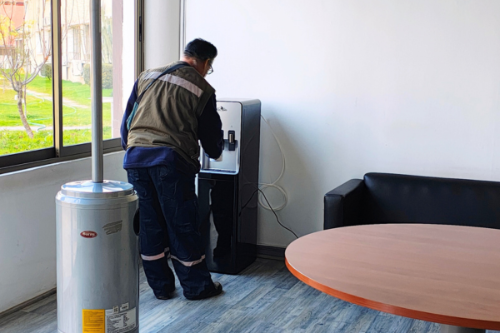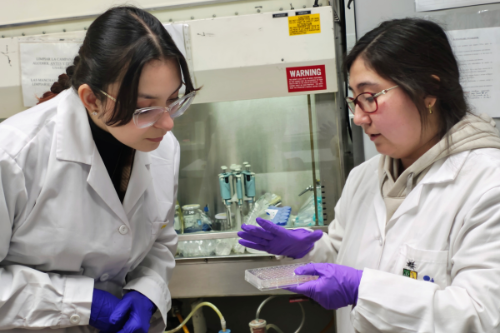Antioxidants play a fundamental role in human health due to their capacity to regulate the rate at which free radicals induce the oxidation of lipids, proteins, and nucleic acids in our cells. By preventing the oxidation of these biological substrates, antioxidants delay the onset and/or progression of various non-communicable chronic diseases, notably cardiovascular conditions, cancers, type II diabetes, and neurodegenerative disorders.
This function underscores the importance of developing new antioxidants as potential tools to reduce the risk of development and/or death from such diseases (www.portalantioxidantes.com). In this context, researchers at the Antioxidant Laboratory (LAOX) of the Institute of Nutrition and Food Technology (INTA) of the University of Chile, Professors Hernán Speisky and Jocelyn Fuentes, recently discovered three molecules that are among the most potent antioxidants known to science to date: benzofuranones (oxidized metabolites) of myricetin, fisetin, and morin.
Their discovery, published in the prestigious journal Food Chemistry (Q1), is the culmination of a research line in which Dr. Fuentes and Dr. Speisky are global leaders. It began with the paradoxical finding, which contradicted prior scientific understanding, that the oxidation of certain antioxidants results in the formation of metabolites with potency up to 1,000 to 5,000 times higher than that of the original antioxidant molecules. As demonstrated in their publication Amplification of the antioxidant properties of myricetin, fisetin, and morin following their oxidation (https://doi.org/10.1016/j.foodchem.2023.137487), this applies to metabolites resulting from the oxidation of flavonoids of the flavonol type, whose chemical structure corresponds to benzofuranones (BZF).
Professor Hernán Speisky is Director of LAOX INTA and holds a Ph.D. in Pharmacology from the University of Toronto. Professor Jocelyn Fuentes is Head of the Antioxidant Analysis Laboratory at INTA and holds a Ph.D. in Nutrition and Food from the University of Chile.
The researchers explain that since the flavonol precursors of BZF are abundant in the outer parts of certain fruits and vegetables (such as their skins or peels), their new studies are focusing on whether such parts naturally contain BZF in their composition, thereby opening up the possibility of using them as inputs for the development of new functional foods and/or nutraceutical products.
“If we identify which foods contain these compounds, scientists could recommend increasing their consumption. And in the case where BZF are found in parts of foods currently considered discards (such as skins, dry peels, stems and/or roots), their use could represent a reorientation of consumption or their use as a functional ingredient,” explain the researchers.
In this regard, it is worth noting that, following the discovery of quercetin-derived BZF in dry onion skins, and taking advantage of that discard, LAOX developed a standardized extract of this compound. Currently, LAOX is working with certain business sectors to incorporate this extract into animal feed products.
Both academics point out that they are also evaluating the possibility that, due to their oxidative nature, certain food preservation and/or processing practices (e.g., exposure to oxygen and/or high temperatures) are, per se, conducive to the oxidative conversion of the aforementioned flavonols into their respective BZF, emphasizing that in the latter case the potential antioxidant contribution would be given not only by the presence of BZF in the natural state of these foods, but also by the effect of “antioxidant amplification” that the way they have been preserved and/or processed would have.
Acknowledgments: The authors thank Fondecyt Regular projects 1190053 and 1250088, and the Impulso 2024I1DID project for financial support. They also acknowledge the contributions of all co-authors to the referenced work.
Reference: M. Fernanda Arias-Santé, Jocelyn Fuentes, Camila Ojeda, Mario Aranda, Edgar Pastene, Hernán Speisky. Amplification of the antioxidant properties of myricetin, fisetin, and morin following their oxidation. Food Chemistry, Volume 435, 2024.
Keywords: Flavonoid oxidation; Antioxidants; Benzofuranones; Myricetin; Fisetin; Morin; Quercetin; Functional food ingredients.






